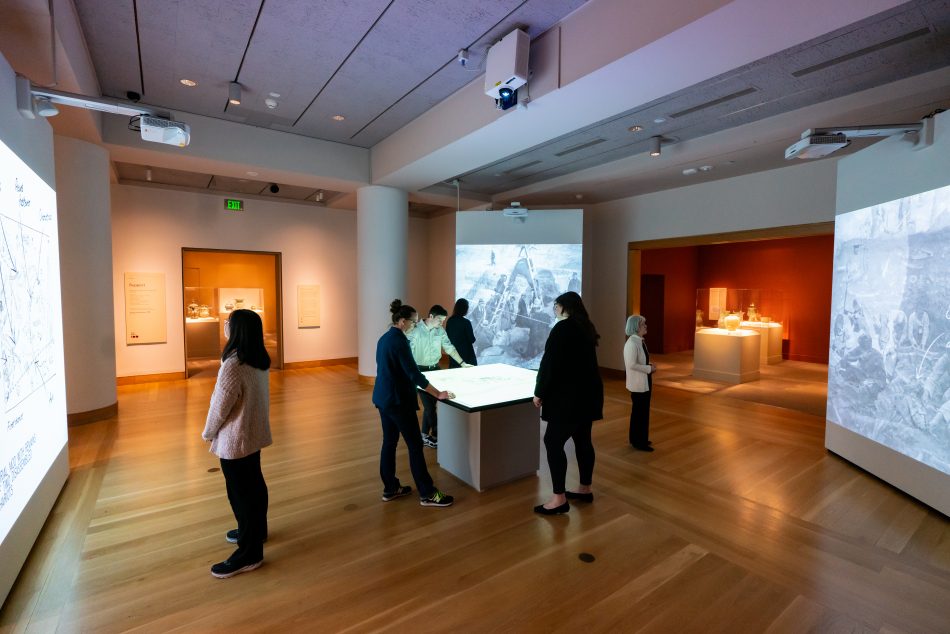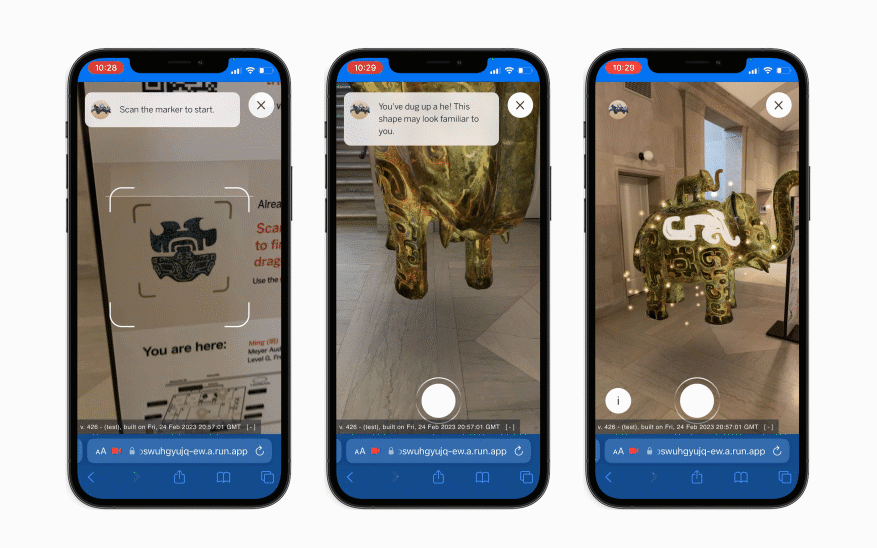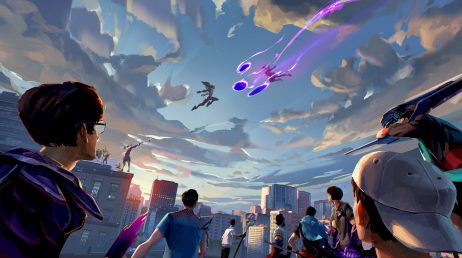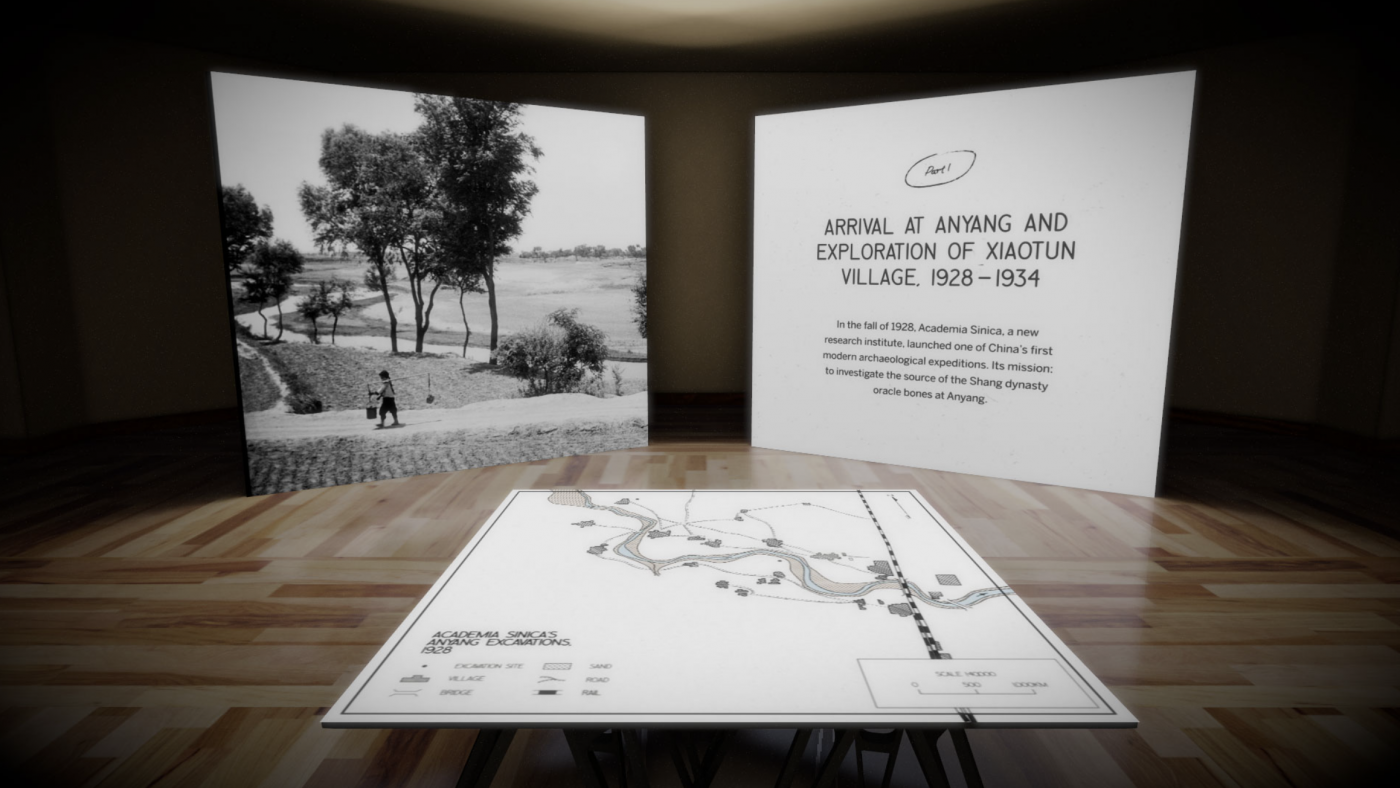
Shelley Adamson
Anyang: China’s Ancient City of Kings
‘The success of these interconnected projects ultimately hinged on the close bond and partnership formed between our team at UNIT9, and our clients at the Smithsonian’s National Museum of Asian Art. It was a humbling and truly rewarding experience. Together we produced work that we could never have imagined independently. This, to me, is a sign of a great creative collaboration.’
The background
2023 marked the centennial celebrations for the Smithsonian’s National Museum of Asian Art (NMAA). As a key part of their celebrations, they launched Anyang: China’s Ancient City of Kings, a special exhibition featuring bronzes, jades, and other Shang Dynasty artifacts from the birthplace of Chinese archeology.
The Smithsonian wanted to incorporate rich immersive and interactive experiences for onsite visitors, plus make the exhibitions accessible to patrons at home around the world. So we collaborated with the museum’s team for six months to plan, build, and execute three unique digital experiences into the show.
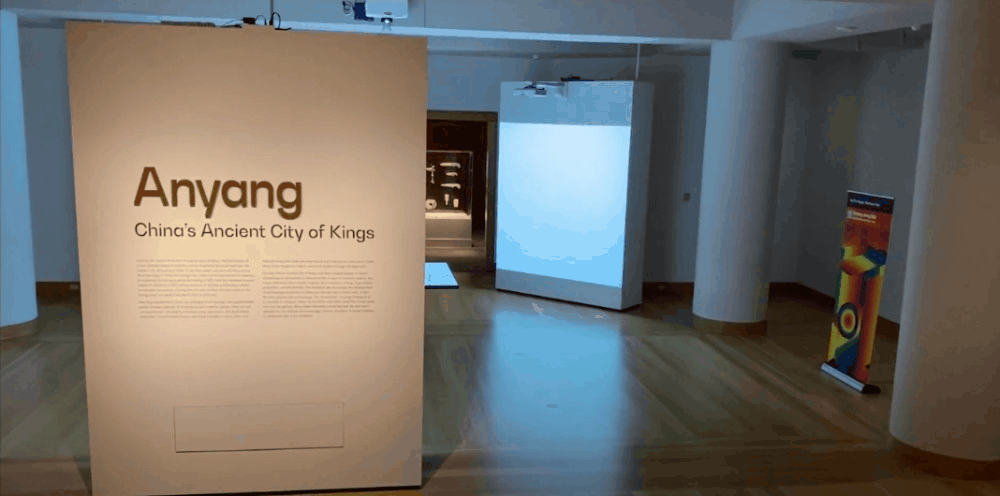
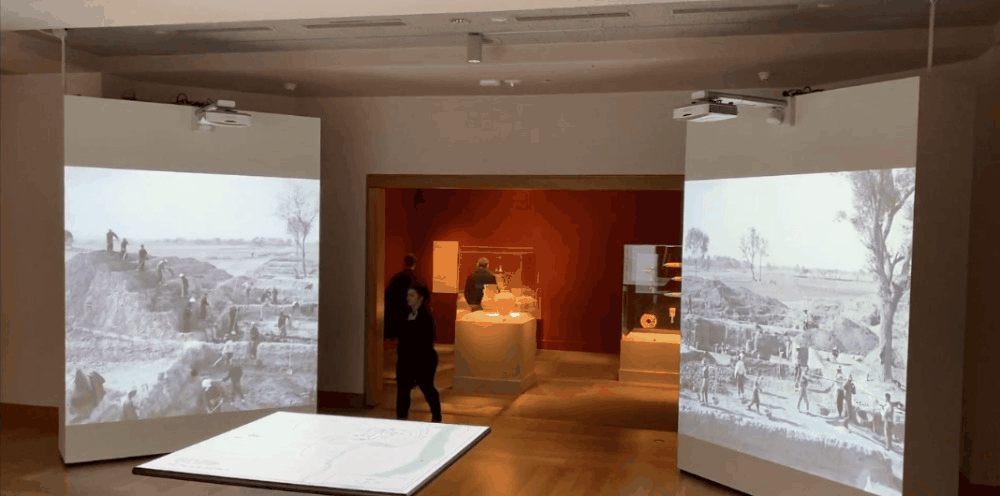
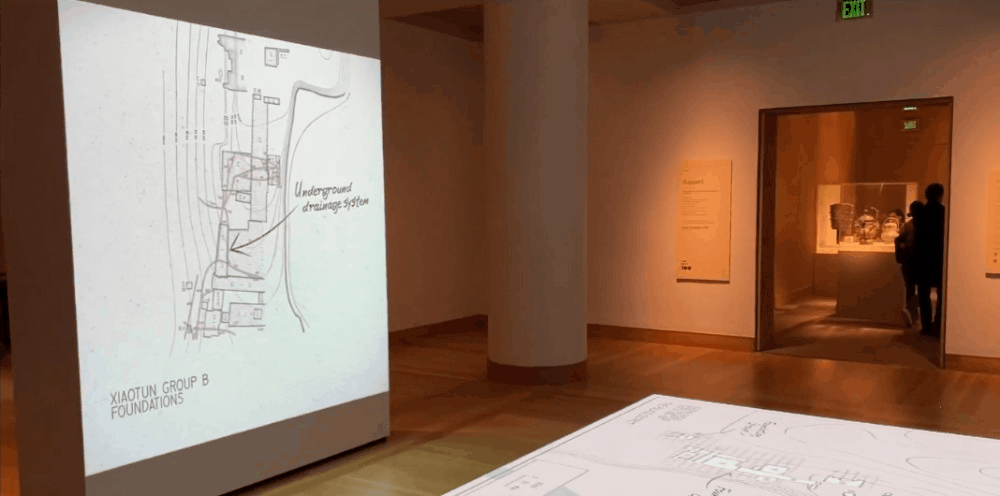
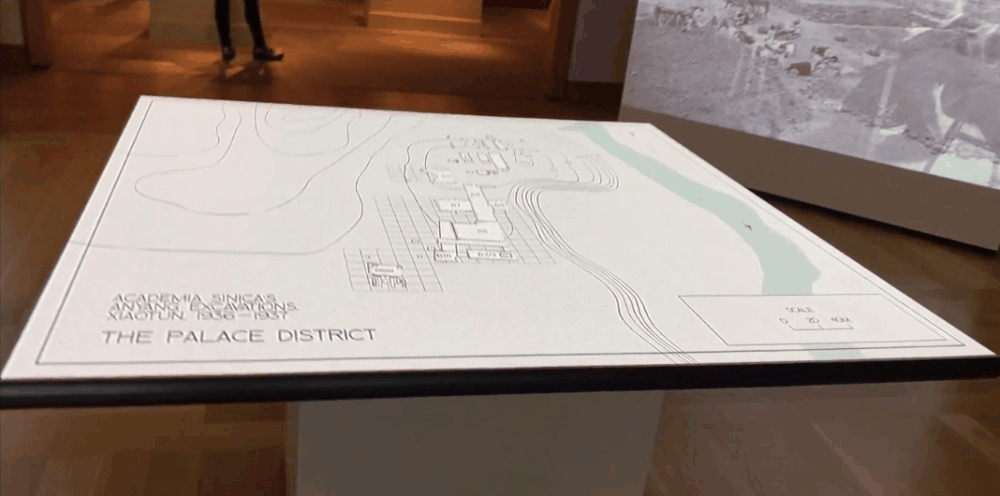
The execution
The Anyang Underground was an awe-inspiring immersive multi-screen video installation that served as the introduction to (and end point of) the Anyang: China’s Ancient City of King exhibition. Multiple screens worked together to tell a single narrative of the first excavations at the Anyang site in the late 1920s and early 1930s, and featured archival photos, footage, drawings, and documents. Sound design was equally as important as the visuals: We positioned speakers spatially in the gallery to truly immerse visitors in the world of Anyang.
For patrons who couldn’t make it to the physical exhibit, The Anyang Underground 360 was an immersive, accessible WebGL translation of the physical installation that lived on the NMAA website. To mitigate loading and buffering issues with our four 8-minute videos, we read only one big video and applied its texture via UV maps and shaders to four different planes in 3D space, improving performance considerably.
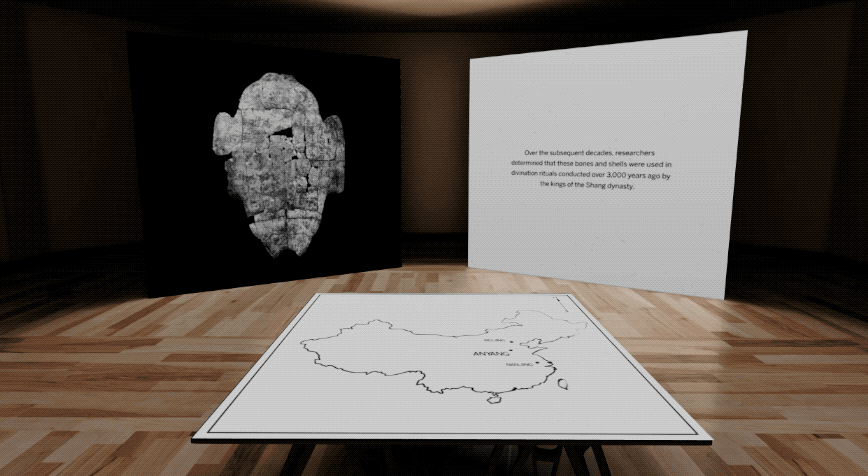
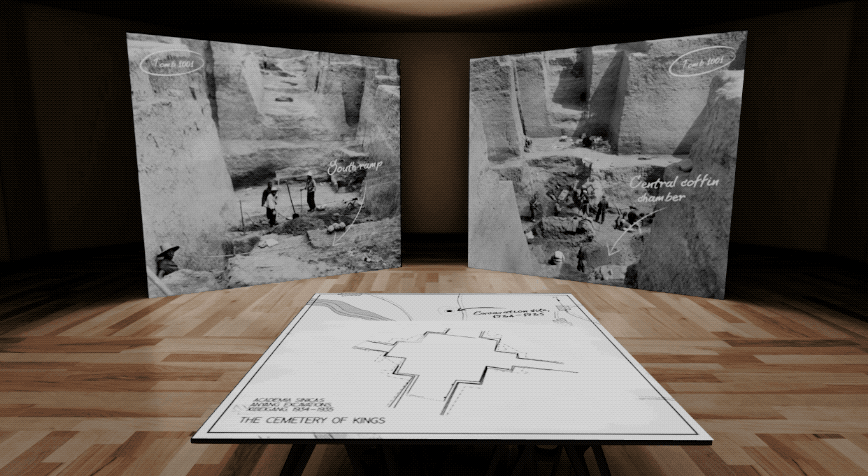
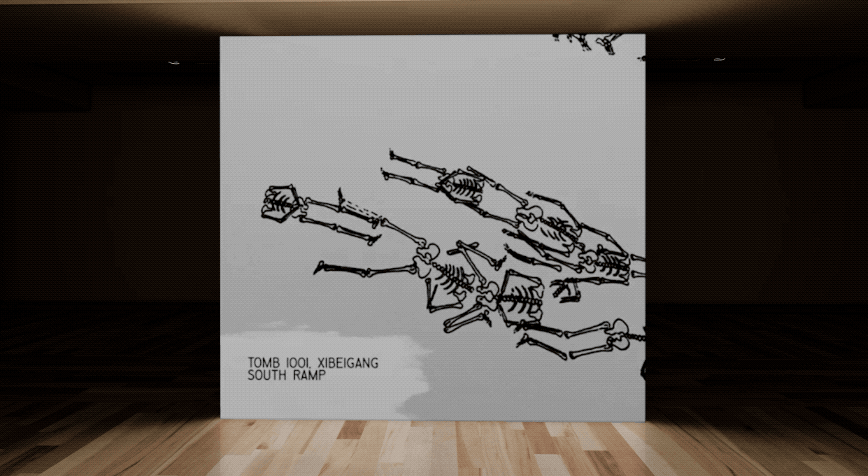
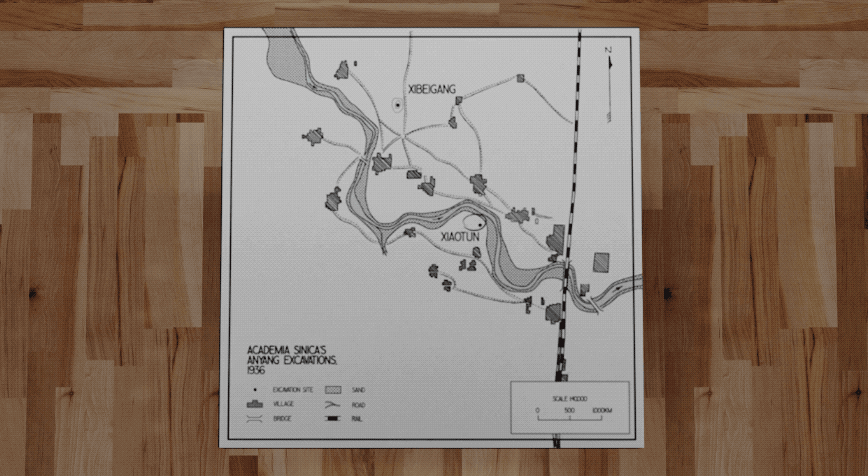
Life in the City: An Anyang Neighborhood was an interactive kiosk composed of a tabletop touch screen and a 55” wall-mounted content display that explored daily life in Anyang. People controlled the experience through the
tabletop screen, on which we constructed a map (a top-down photograph of an excavation site) that was simple and intuitive enough for people to navigate the neighborhood with almost no instructions—a tricky design line to walk! The wall-mounted screen displayed the content relevant to the features and topics selected on the map.
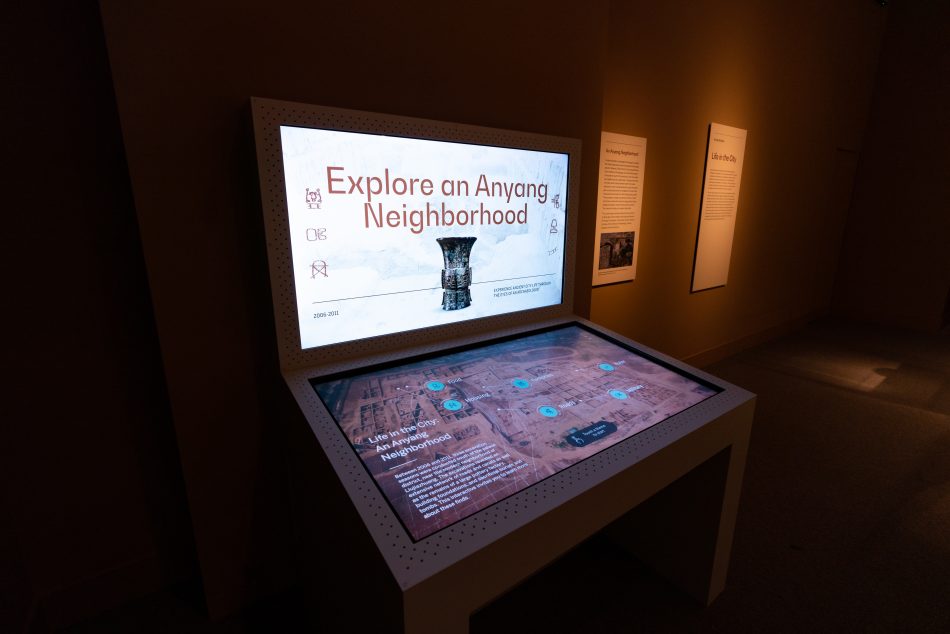
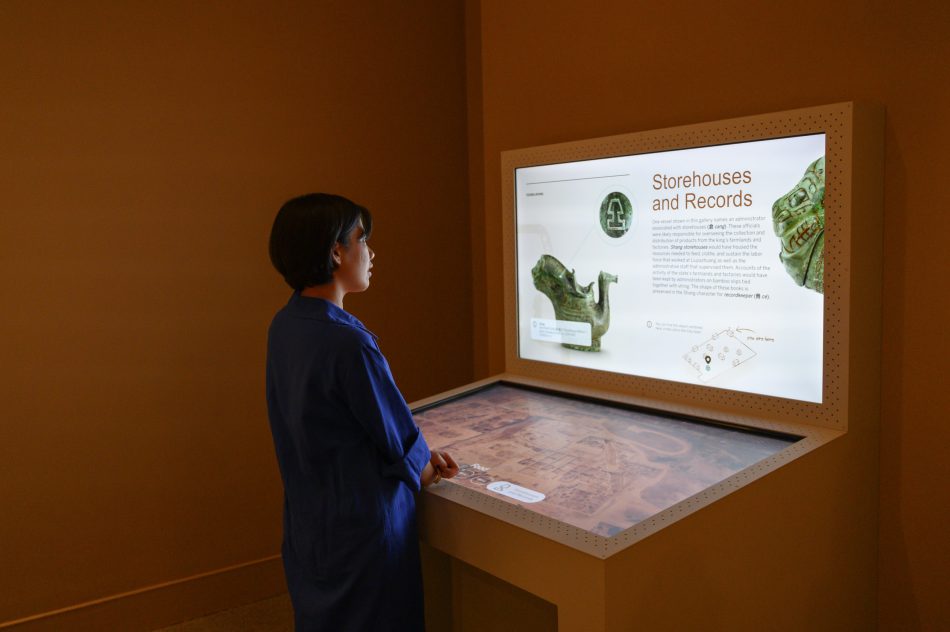
We also created an accessible web translation of the interactive kiosk experience that lived on the NMAA website. Our team found efficiencies and was able to reuse some of the code for the web version, saving valuable time.
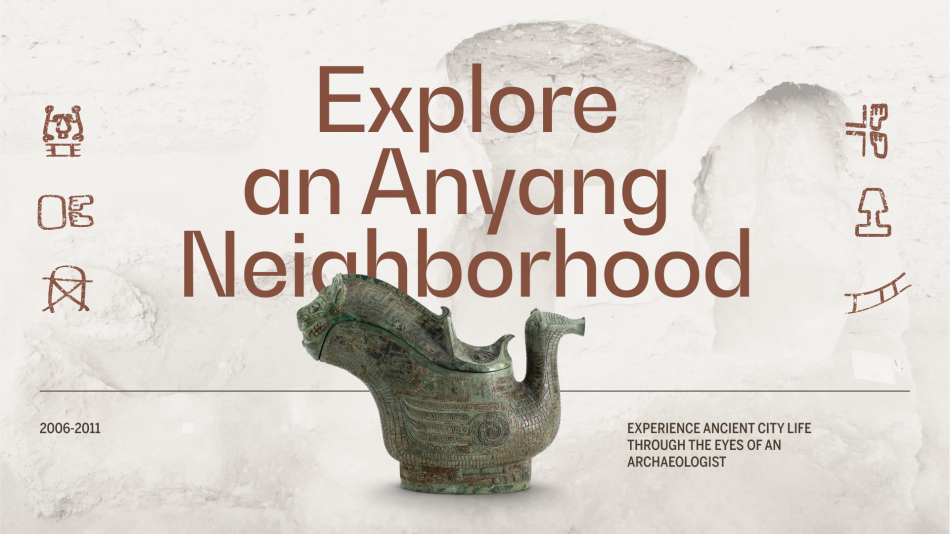
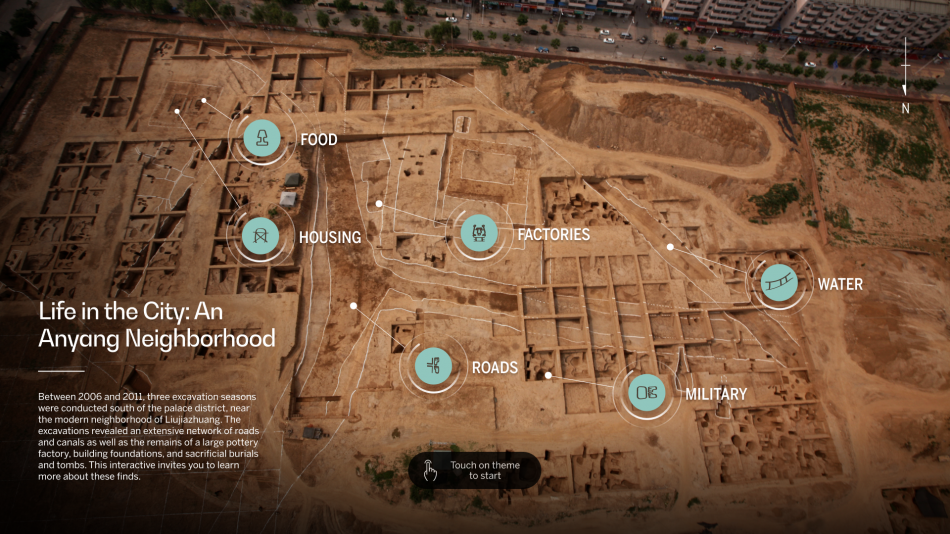
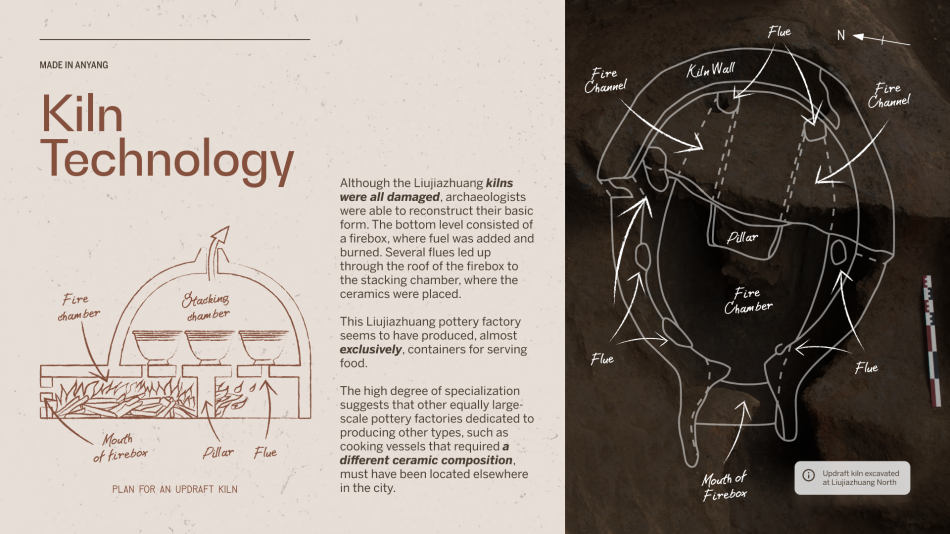
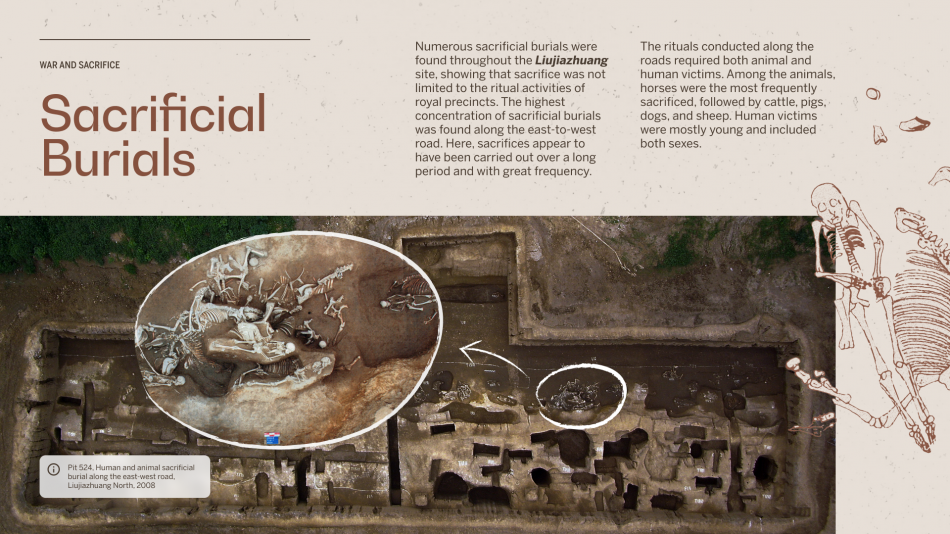
Hidden Dragons AR was a mobile WebAR scavenger hunt that took museum patrons on a journey through the NMAA’s two buildings. It challenged them to find six ancient dragons hidden on virtual replicas of bronze artifacts
from the museum’s collection, which were accessed by scanning image markers on physical signage located across the museum. The scavenger hunt enhanced the visitor experience and connected the Anyang exhibition (both literally and thematically) with the Ancient China galleries.
It was an incredible creative challenge to properly concept our 3,000-year-old dragons, which we based on bronze carvings and abstract shapes. We brought the mobile scavenger hunt to life with three main technologies: ReactJS, Playcanvas, and 8th Wall. Visitors could also interact with the scavenger hunt in a screen reader–friendly accessible mode.
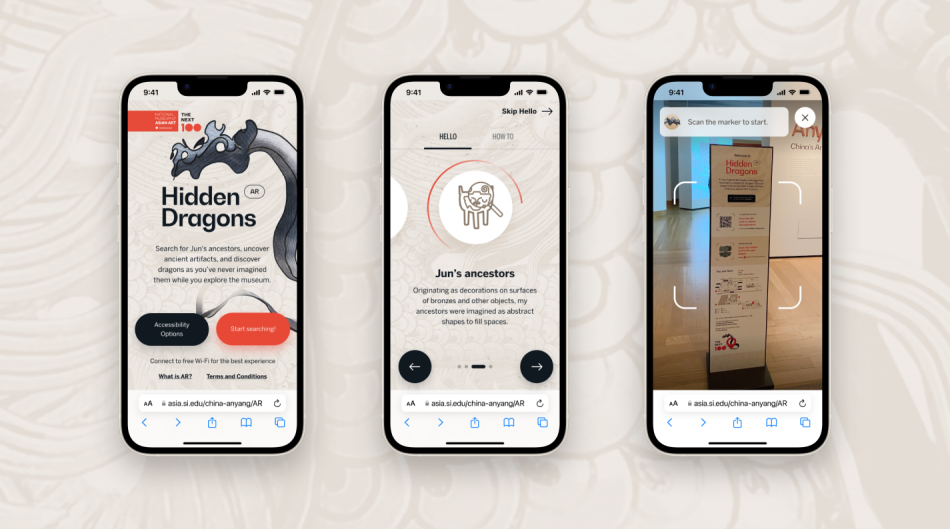
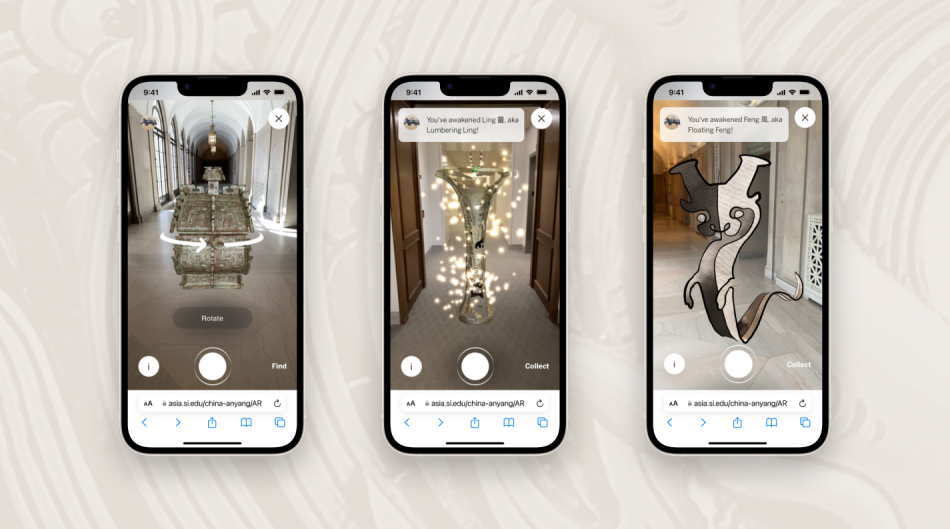
The results
The immersive and interactive installations transported people back in time and made them feel part of the Anyang excavation journey. The feedback was incredibly positive from museum patrons, museum staffers, and representatives of the Smithsonian institution as a whole.
It was a professional pleasure to collaborate with the Smithsonian’s NMAA on a project that helped preserve, honor, and interpret Asian Art in ways that deepen the collective understanding of Asia and the world.


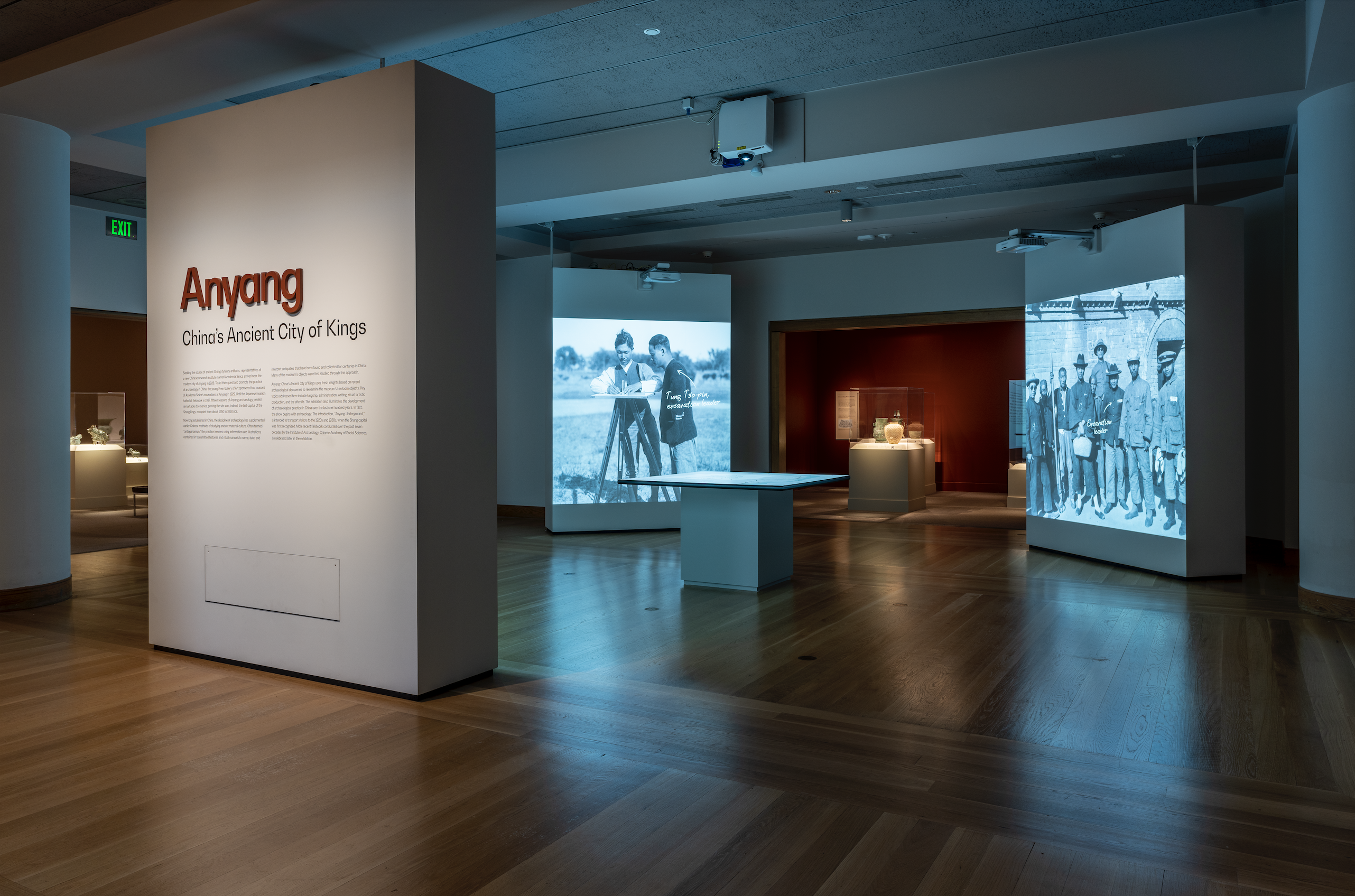
Credits
-
Division
-
Creative Director
-
Brand
-
Platform
-
Kind
-
Industry
-
Release Date
2023-04-03
